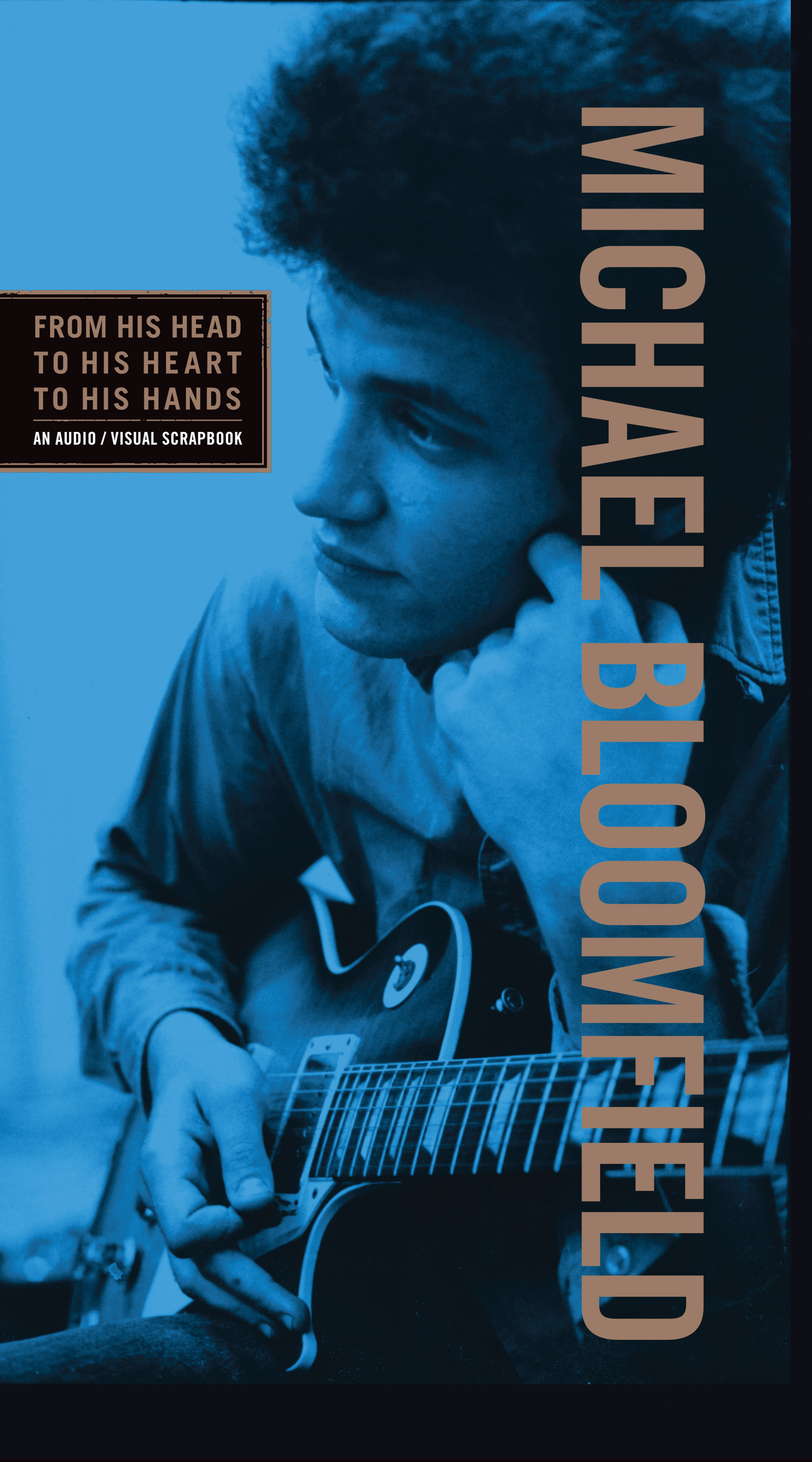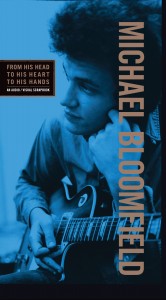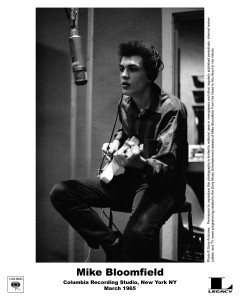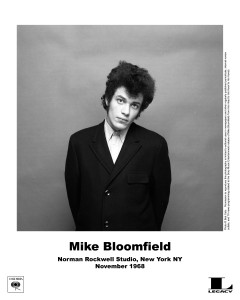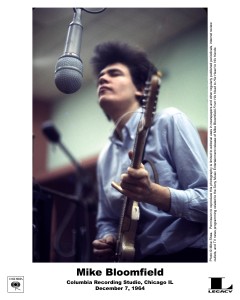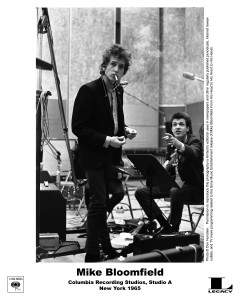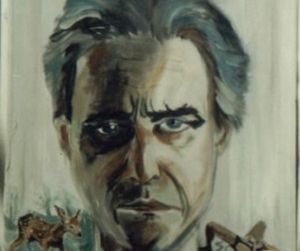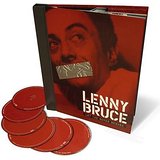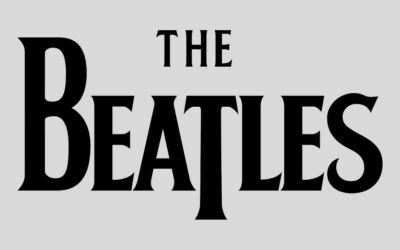By Harvey Kubernik c 2014
Legacy Recordings, the catalog division of Sony Music Entertainment for February has just released From His Head To His
Heart To His Hands, a career-spanning 3CD/1DVD box set anthology chronicling the music of Michael Bloomfield.
The collection also premieres Sweet Blues: A Film about Michael Bloomfield directed by Bob Sarles
Produced and curated by Al Kooper (who played with Mike Bloomfield on Bob Dylan’s Highway 61 Revisited sessions in 1965 and the Super Session album in 1968), From His Head to His Heart to His Hands houses a wealth of previously unreleased tracks–including Bloomfield’s first demos for John Hammond Sr.in 1964 and his final public performance, concluding with a track from the 1980 Bob Dylan concert in San Francisco–alongside essential key recordings, both live and studio, from his all-too-brief life and career.
The anthology collates solo material, work with ensembles including the Paul Butterfield Blues Band and the Electric Flag, tracks with Muddy Waters and Janis Joplin, Highway 61 band outtakes and more.
Director Bob Sarles’ From His Head to His Heart to His Hands Sweet Blues: A Film about Michael Bloomfield documentary combines vintage audio interviews and live performance footage of Bloomfield with newly lensed reflections on Bloomfield from the guitarist’s friends and fellow musicians.
The box includes a 40-page booklet displaying a gallery of terrific photos covering the various phases of Mike’s extraordinary career and extensive liner notes by musician, MOJO contributor, and lifelong Bloomfield fan Michael Simmons.
Born in Chicago in 1943, Mike Bloomfield learned blues guitar as a teenager hanging out in the clubs of the South Side, where he “played with every living musician who played electric blues” in real time with masters like B.B. King, Albert King, Freddie King, Buddy Guy, Muddy Waters, Howlin’ Wolf, Big Joe Williams and many more) from 1959 into the early 1960s.
A blues artist, Bloomfield was a prodigy who assimilated jazz and a plethora of global rhythms into his fluid improvisations. As a final cog in the wheel of the original Paul Butterfield Blues Band, one of rock’s first interracial bands and an example of the blue’s first experimental ensembles, Michael Bloomfield helped open new vistas of cultural and musical possibilities in 1965-66.
Bloomfield, who’d been signed in 1964 by legendary A&R man John Hammond Sr., was called into duty as a session guitarist for Bob Dylan’s Highway 61 Revisited album. The results, particularly the single “Like a Rolling Stone,” took AM rock radio in a whole new direction.
“Best guitar player I ever heard.” — Bob Dylan.
Mike Bloomfield went to work on the Butterfield Band’s psychedelic blues masterpiece, East-West (1966), a landmark recording combining elements of blues, jazz, psychedelia, Eastern music and more.
“The future of rock guitar was in East-West. At one point or another you’re hearing what would become the Grateful Dead, Santana, the Allman Brothers, Crazy Horse, Television and the Tedeschi Trucks Band.” — Dave Alvin
In 1968, Bloomfield founded the Electric Flag, an experimental soul band with horns. That same year, he sat in for the Grape Jam disc in Moby Grape’s sophomore double album and collaborated with Al Kooper on the platinum-selling Super Session LP.
“The first time I saw Michael play guitar…it literally changed my life enough for me to say, ‘this is what I want to do for the rest of my life.'” — Carlos Santana
From 1968-69, Bloomfield would continue to release innovative, guitar-heavy works, including his debut solo album It’s Not Killing Me and My Labors with Electric Flag member Nick Gravenites. Bloomfield’s career was later highlighted by session work including Muddy Waters’ Fathers and Sons and Janis Joplin’s solo debut I Got Dem Ol’ Kozmic Blues Again Mama! As well as recorded sit-ins with Woody Herman and Tracy Nelson.
“I became a Bloomfield fan when I was a 10-year old Beatlemaniac in 1965 and my best friend’s 16-year old brother played us the first Butterfield album with Michael on lead guitar,” remembers music journalist Michael Simmons. “I was astonished by his fleet fingers, his ringin’-a-bell tone, his ferocious attack. I dug Electric Flag’s debut, but it was Super Session with Michael and Al Kooper that sent me over the top. The A-side of that album with Bloomers is still one of my fave rock recordings of all time. It’s got chops, improvisation, intelligence, soul — things I’ve found lacking in a lotta rock for the last 40 years.
“I spent about 8 months researching and writing the liner notes for the box set — only three months past the deadline! — during which time I fully immersed in Bloomfieldiana and interviewed dozens of family, friends, musicians and archivists” Simmons explains. “Like all genii, Michael was one-of-a-kind. Several friends call him the most intelligent person they’ve ever known, he was completely committed to making music for art’s sake and not for commerce, and he thought for himself. He was hysterically funny, generous to a fault, human and imperfect and undependable and a fantasist, and the first guitar god of ’60s rock. While he influenced every rock and blues guitarist who followed, no one sounds exactly like him and I can’t say that about many of his peers. Plus he was a nice Jewish boy, which warms the pastrami of my Yiddishe heart.”
“The first time I ever felt absolutely thrilled by a piece of music – thrilled in that way that includes physical fright, even to the point of trembling – I was twelve years old
and Michael Bloomfield’s guitar was responsible,” admits Dr. James Cushing a KCPR-FM DJ on the campus of Cal Poly San Luis Obispo in California.
“After each chorus of ‘Tombstone Blues’ on Dylan’s Highway 61 Revisited, a sound as snarling and heedless and courageous as anything I could imagine leapt out of the speaker and implied a whole world where adult men and women fought hard for their lives and died anyway. Not just implied it – proved it. And what thrilled and scared me was the way the music showed me that, even as a boy, I lived in this world, and had to affirm it to survive in it. I had no idea how I was going to affirm it. I only knew that every record this Michael Bloomfield guy played on was potentially a piece of this thrilling wisdom,” Cushing reinforces.
“Over time, I would find new iterations of this wild thrill. The Paul Butterfield Blues Band, East-West, A Long Time Comin’, Super Session, The Live Adventures, and various bootlegs all filled in more of the Bloomfield picture. I learned about his insomnia and druggy attempts to cure it, his personal irresponsibility, and his surreal background as the son of the man who got rich by inventing the salt shaker. I learned about Charlie Parker and Bix Beiderbecke, and recognized Bloomfield as a man in that tragic pattern, artists overcome by the terrible demands of a musical gift that was bigger than their ability to handle it.
“Most of all,” volunteers Cushing, “I learned about the blues, the simplest but most nuanced of American musical forms, because Michael Bloomfield WAS the blues. Like the music, he transcended race and background to embody the old America’s deepest invention, and its quiet, noble message: that life is suffering and ends in death, and we have no choice but to affirm it. The thrill in Michael Bloomfield’s music lies in knowing it understands all the dark places in the life it affirms.”
I saw Michael Bloomfield play with the Electric Flag and in 1978 interviewed Michael for Melody Maker during his stint with the KGB Band.
Bloomfield told me the one big thing that he learned from Paul Butterfield was not to have any fear by watching Paul go further into the deepest sections of South Side Chicago world to see and play with the immortal bluesmen.
Michael Bloomfield wasn’t in show business and definitely not a careerist or room worker. I guarantee you he would not have a website in 2014.
Harvey Kubernik interviews Al Kooper
Q: Tell me about your initial encounter with Michael Bloomfield?
A. Well, Michael and I met on the “Like a Rolling Stone” session. I had read about him in Sing Out magazine, and saw a picture of him where he looked a little more rotund then he was when I met him. His brother says he was a fat kid growing up. So we met on the ‘Like A Rolling Stone’ session and really hit it off. So we played together on that.
Q. He blew your mind, didn’t he?
A. Oh, absolutely! I was supposed to play guitar on that record. I packed up my guitar when I heard him warming up. It never occurred to me that somebody my age, and my religion could play the guitar like that. That was only reserved for other people. It never even occurred to me that that was an option for someone my age and my color. I had never seen that, or heard that up to that day.
Q. And you brought bassist Harvey Brooks into that session as well.
A. That’s right. So, that pretty much ended my guitar playing by and large. I said, ‘well OK, he’s as old as me and he can play like that. I’m never gonna be able to play like that. Thank you, goodbye.’ And, you know, I ended up playing organ on that record, and then I became a keyboard player really that day. So, it was a damn good thing because, you know, that was competition I couldn’t deal with.
Q: You knew Tom Wilson who produced the “Like a Rolling Stone” date and was working with Bob Dylan. I know you used to lift Bob Dylan acetates out of Tom’s office.
A. I did. I was a bad boy. Tom was sort of a spectator sport producer. He didn’t do all that much. He’d put you in the studio and got the job done. He didn’t interfere in anything. At least when I worked with him.
“Tom earlier worked for Savoy Records. He was a very bright guy. He was like ‘what’s happening man?’ That kind of guy. But you knew he was bright and he talked about very erudite things, and he really saved my life that day on that Dylan “Like a Rolling Stone” session. Because, he could have…I went to him and said, ‘Man, let me play the organ.’ They had just moved Paul Griffin from the organ to the piano. And I went over to Tom Wilson, and I was invited just to watch, you know, and I said, ‘Man, why don’t you let me play the organ, I got a great part for this.’ Which was bull shit. I had nothing. And he said, Man…You’re not an organ player…’ And then they came to him and said, ‘phone call for you Tom.’ And he just went and got the phone. And I went in to the studio and sat down at the organ. He didn’t say no. He just said I wasn’t an organ player. OK.
“On the Highway 61 Interactive CD put out a few years ago, they have the multiple takes of ‘Like a Rolling Stone,’ and on there you can hear Tom Wilson, ‘OK. This is take 7. Hey! What are you doing in there?’ Then you hear me laughing, and that was the moment he could have just thrown me out and rightfully so. And you know what? He didn’t. And that was it. That was the beginning of my career. Right then and there. That studio dialog is documented. Wilson is the guy who invited me to the session first of all, which is really nice. You didn’t get invited to Bob Dylan sessions, you know, especially if you were a nobody like I was. And there it was. There was the chance he had to toss me, and it would have reflected back on him because he had invited me to the session.
Q: On that “Like a Rolling Stone” date, was there a reason why you “played behind the runner” on the track? The organ follows the Dylan vocal.
A: No I did that because I was waiting to see what chord they were going to do. There was no music or lead sheet, or anything. I was just playing by ear and I didn’t want to be the one making a mistake because I was doin’ like a rebel run there. But anyway, we played together on that session, and the rest of the (Highway 61) album.
Q: On this new Mike Bloomfield anthology you assembled a different mix of “Like a Rolling Stone.”
A: I took the Dylan’s voice off the master tape and put the backing track on and re-mixed it. You know, in ‘Like a Rolling Stone’ there are three things that I made louder than they were: The piano, because that guy, (Paul Griffin) was so brilliant. So the piano is louder in the parts that he plays amazing things. And the thing that is really eye-opening about it are the drums are louder. And you hear some things you’ve never heard before.
“Besides Michael’s playing you can really hear the drums of Bobby Gregg. I had all the tapes transferred to digital. I didn’t want to touch those tapes. There’s a version of ‘Tombstone Blues’ with the Chambers Brothers singing. I remixed that.
Q: You got to know Bloomfield in 1965 and ’66 in New York.
A: I joined The Blues Project. He was in Paul Butterfield’s band. Two blues bands. And we both left the blues bands to start horn bands, which we were both kicked out of again. The horn bands that we started. Very amazing parallel in our careers. Starting from the day that we met. So it seemed to me, in hindsight, looking at that, when I started producing at CBS, that we should make a record together. We were like destined to do something together. Now this whole time we had been friends since we met. I’d go visit him when I was in his town.
Q: You were an A&R man and staff producer at Columbia Records in 1967.
A: I came to Columbia Records in 1967 after the June Monterey International Pop Festival where I had been assistant stage manager. I assembled BS&T and joined the label as a staff producer. I brought BS&T to Columbia.
“John Hammond staff producer at Columbia and my office was next door to Hammond. We became very good friends. We spent time together and it was very unusual for him to do that. He would play me stuff. He would talk to me about music. And I was friends with his son. He loved that I was there and that I had long hair and that I wasn’t like the rest of them at the label. That’s why we got along. After he signed (Bob) Dylan he was second-guessed. Some called it ‘Hammond’s Folly.’ Then in 1965 “Like a Rolling Stone.”
Q. You caught Bloomfield play many times with Paul Butterfield.
A. Yeah! He ended my guitar playing I’m tellin’ ya. Both of us had just played on that Grape Jam album. So that sort of gave me the inspiration to say, “Why don’t we
make a record.” I wanted to make a record with Bloomfield, and I wanted to make a record that was a very simple, basic record, not a ‘weighty’ record. So inspired by the Grape Jam thing, I said, “let’s make a rock ‘n’ roll record based on the way jazz records are made. You pick a leader, or two leaders, and then you just go in, you pick some songs, you pick sidemen, and you just blow. No rehearsing or anything. You just go in and blow.” So I said “I don’t want to make a jazz record.” And I was very dissatisfied with the way he was recorded up to that point.
Q. Your Super Session production gave us a chance to really hear Michael Bloomfield in a studio setting.
A. His live playing was like 300 times better than performance on a record to that point. In my opinion. So, what I wanted to do was put him in a situation where he was uncluttered by his career and uncluttered by his situation in the recording studio, which must have inhibited him.
“So I made it as uncomplicated as possible for him. Because that was the goal of the sessions for me, was to get amazing playing out of him like I heard him do on stage. And I felt really vindicated that I had done that. And that’s what I wanted. I did what I set out to do.
“And, the other thing was, we both had been kicked out of the bands, and then Stills, too. He was out of his band (Buffalo Springfield). So Stills fit in, in a really weird way. Because none of us had anything at stake and that was the whole point of that record. There was no career thing goin’ on. We just did it because we played music. That’s what’s so wonderful about that. Super Session wasn’t made to sell records. It was just made like those jazz records were made for Blue Note, except it wasn’t “Blue Note” kind of music.
“I had no expectations for that record. I mean just none whatsoever. I just did it because I had a job as a producer and I had no one to produce, and I went in because I thought Michael and I should make a record together, because how our careers were parallel. And also because we were friends, and it would be fun to work together. Michael brought Eddie Hoh (drummer) in, and I brought Harvey in (bass). I said, “you pick the drummer, I’ll pick the bass player.” Again, sort of like a Blue Note concept.
“The most important thing is the playing of the two principals, Bloomfield and Stills. It’s timeless. Bloomfield’s stuff is some of the greatest blues playing that there ever was.
“Mike Bloomfield was the original guitar hero even before Clapton at least in my hood,” suggests musicologist Paul Body. “I don’t how we knew about him but we did. Maybe it was ‘Like a Rolling Stone’ but mostly it was the guitar strangling on the first Butterfield album. He was a true character, just check out his bit in the movie Festival. Saw him at the Monterey International Pop Festival with Electric Flag right after he split from Butterfield, lots of horns and Buddy Miles and it was just as advertised American Music. Got to see him up close back stage at the Shrine. He was jamming with Jimi Hendrix. I heard that before I got there that when Bloomfield showed up and Jimi started playing Bloomfield’s licks that is how heavy he was. Anyway in 1968, he could make that Les Paul do everything but crawl on its belly like a reptile.
“Unfortunately he was chased by demons, so by the time I saw him at the Troubadour, he wasn’t even playing his electric guitar anymore. The sting was gone. Too bad because he was one of the cats who got the Blues Revival going back in 60’s. Mike Bloomfield was a Bluesman.”
“Mike Bloomfield is one of the most outstanding guitarists of his
generation,” states guitarist David Kessel, who oversees the www.cavehollywood.com website. “The seemingly effortless flow of his fingers creating a majestic waterfall of blues interpretation is phenomenal. As a visionary from the Butterfield Blues Band to Dylan, he delivers big time. He helped pioneer new music trends for the blues, folk rock, and the guitar in general. His inspired playing on East West and ‘Don’t Throw Your Love On Me So Strong’ is a gold standard of vision for blues and rock guitar.
“My brother Dan and I went to school in Switzerland, and while in Europe, our dad Barney pulled some strings to get us in The Bag Of Nails club, in London to see Jimi Hendrix. Upon returning to L.A. in the early part of the Summer of 1967 (Summer Of Love), we went up to Sausalito outside San Francisco and stayed on a houseboat for 3 weeks. Our Dad was giging at El Matador (a Jazz club in San Francisco). Next to the houseboats, were a helicopter pad and some airplane hangers.
“We were lounging around one day when this bolt of guitar thunder came ringing out of one the hangers. Heavily intrigued and awed by the sound and playing, Dan and I sort of snuck up to the entrance and peeked in. By then the whole band was playing and nobody saw us quietly enter and go to a kind of hidden corner. We were absolutely blown away by the band, but particularly the guitar player who was playing stuff that we knew was extra special. It blew our mind when we recognized him as Michael Bloomfield, whom we already worshiped from the Butterfield Blues Band. He was playing a Les Paul guitar and was going through two Fender Twin Reverb amps. The echo in the hanger with the reverb was a gigantic guitar sound. After several songs, the band took a break, and at that point we were spotted. The singer, who we found out later was Nick Gravenites, got kind of mad and said ‘what the hell are you kids doing here?’
“Michael came over and told us it was a private rehearsal. We asked the name of the band, and were told by these guys they were Electric Flag, and that they were getting ready for their first gig, playing the Fillmore. Hoping that it might help our plight of wanting to stay and dig the music, we said to Michael ‘our dad is Barney Kessel, he’s a Jazz guitarist, don’t know if your familiar with his work and we’re staying in one of the house boats right here. We heard you and it sounded so good, we had to come over and check it out.’ His reply was ‘Barney Kessel is your dad! Well you guys you can hang out as much as you want, and in return do you think you could introduce me to him. I mean, that guy is unbelievable.’
“We said ‘sure Michael, we’ll bring him by tomorrow.’ Michael turned to the band and said ‘leave these guys alone, they can come and go as they please.’ There were a few groans from some of the guys. The next day we were able to talk our dad into meeting Michael and saying hello. As we were talking to Michael outside the rehearsal hanger, waiting for our dad to arrive, we asked him if he was hip to a guy named Jimi Hendrix (this is right around the time Jimi was to be introduced to the U.S. through the Monterey International Pop Festival). We told him that Jimi was a way out guitar guy and that we had seen him in London and he was ripping things up, and we already had some of his U.K. records that we brought back home from Europe. We were surprised that nobody here in the states that we talked to, knew who he was. He looked at us and kind of turned a little sweaty and said ‘Oh yeah man, that cat is a little scary.’
“We asked Michael if he knew Jimi used Marshall amps (he did) and talked about the difference between his set up (Gibson Les Paul Guitar & Fender Twins amps) and Jimi’s set up (Fender Strat & Marshall amp stacks). Right about then, we see our dad is on his way to meet Michael, and we could see a profound respect from Michael towards our dad as he approached. He started kind of fashioning his hair with his hands, stood up straight, and patted down his un-tucked blue work shirt. Michael stuck out his hand and said ‘Hello Mr. Kessel, I’m very pleased to meet you. I’m a guitar player who plays the blues. I want you to know that your kids have been welcome at our rehearsals, and have expressed an appreciation for my playing. I take that as a very high compliment, with you being their dad and all. I really wanted to be able to say that I met you, talked to you, and shook your hand.’ They chatted about music for 10-15 minutes, and our dad excused himself, as he had to go into the city (San Francisco). Electric Flag rehearsed several more days before heading to the Fillmore, for the very first Electric Flag gig. What a unique, cool, and one of a kind experience.”
“Mike Bloomfield is music on two legs.” — Eric Clapton.
“I saw Paul Butterfield and the band at The Trip,” reminisced Robert Marchese, record producer, and former manager (1970-1983) of Doug Weston’s Troubadour club in West Hollywood. “The Butterfield band opened for the Byrds. I was walking on Sunset Boulevard and saw Michael and some of the band members in front of their motel the night before their opening night. ‘Hey! Are you the Paul Butterfield band?’ I had the first LP. They were in like in shock that somebody knew who they were. On the marquee of the Trip it displayed Byrds Byrds Byrds and in real small letters, the Paul Butterfield Blues Band.
“Bloomfield and I hit it off right away,” asserts Marchese. “I liked Paul a lot, too. I talked primarily to Mikey. I said to Bloomfield, ‘I hate the Byrds. Tomorrow night blow them off the stage.’ After the first show, the Byrds really didn’t want to play after that. And the next night the marquee read Butterfield Blues Band. They had Elvin Bishop and the whole crew. Bloomfield on stage was tremendous. He just wailed.
“Coming from Chicago, Bloomfield and Butterfield went into those fuckin’ clubs to see Howlin’ Wolf and Muddy Waters and were the only white kids who went in there. And actually were asked to come up on the stage to play.
“Once Bloomfield got involved with Dylan in 1965 everybody wanted him. At the time, before Jimi Hendrix, Michael Bloomfield was the guy. You know what I mean? In a lot of ways. Everybody says Clapton, but I always thought Bloomfield was a lot more electric. At the time, you’d hear around town, like when they talked later about Hendrix and Stevie Ray Vaughn, ‘Mike Bloomfield is coming!’ That kind of stuff.
“And I think the worse thing Michael and the Butterfield band ever did was wind up in San Francisco with the (Grateful) Dead. The promoter Bill Graham liked the Butterfield group a lot and they played the Fillmore often.
“I was with him in June ’67 at the Monterey International Pop Festival. The Electric Flag was good but I thought the album was kind of weak in terms of material. But the playing was real good. Buddy Miles became a star there,” stresses Marchese. “Mike and I sat together with Michelle Phillips and watched Otis Redding. He had never seen him. Mike went crazy. ‘Jesus Christ!’ Michael was a happy-go-lucky space cadet. We saw (Jimi) Hendrix at Monterey. I was standing behind the amps on stage.
“I managed the Troubadour for over a decade. One night I’m at the club and the girl at the box office comes over to me and says, ‘Mike Bloomfield is on the telephone from San Francisco and wants to talk to you.’ It had been a year since we talked. ‘Hey, what’s up, man?’ ‘Robert. How you doin’? Did I get nominated for a Grammy?’ ‘Yes you did.’
“Mikey and I kept in touch over the decades. He was great but I just wanted to grab him one time and punch him in the mouth and say, ‘Get off of this shit! You don’t need it, you know.’ I knew he was starting to get fucked up. Which was sad. Because he was a good dude.”
Influential Record Producer Denny Bruce on his friend Michael Bloomfield.
“The first time I heard the Paul Butterfield Blues Band was a happy accident. I was going to see the Byrds play at The Trip club in West Hollywood. In a nutshell, the Paul Butterfield Blues Band was the opening act, who I heard about, but hadn’t seen.
“Hearing traditional blues records, or seeing some live blues acts, usually acoustic, I wasn’t ready for hearing the electricity coming off of the stage. And I do not just mean from the amps.
“What a great team of players, where every guy knew his role, did his thing, and supported the others to make a sound all of their own.
“Nothing against the Byrds, who I liked, but they sounded like college guys in a dorm room playing folk songs, and one of them had a small amp. The Butterfield Band were men showing the boys how to play. The evening before the PBB did a show at the It Club in downtown L.A.
“I went down to the Golden Bear in Huntington Beach to see them play two sets the next night. I went with Jack Nitzsche, a Howlin’ Wolf fan, and from Hawaii ‘The Big Kahuna,’ a local celebrity for the great pot he sold.
“Kahuna never told us he knew the ‘Butter Band.’ So then we went to San Francisco with them and saw them rock the Fillmore. We hung out with them at Seal Rock Beach, where they liked to stay.
“I became friends with Mark Naftalin and Michael. Mark was a friend of my roommate Barry Hansen, now known as Dr. Demento. So Mark and Michael would come by while in LA. In 1968 I started managing and producing blues acts.
“Magic Sam was from the West Side of Chicago, and was on tour. He was playing his first gig in San Francisco, opening for Johnny Winter at the Avalon.
“Michael came to the show early, and dropped in and had a nice chat with Sam, his bass player and drummer, who Michael knew. He knew just about everybody, really. As Magic Sam is getting ready to go, Michael said, ‘Sammy, just do what you do on the West Side and these hippies will love you!’
“I laughed, and thanked him, saying ‘I didn’t have a pep talk ready!’ M.B. looks at me and says ‘He knows how good he is. He is also handsome, and cocky, a lot like Sugar Ray Robinson.’
“Things went well for Magic Sam, and I had talks with Jerry Wexler, and Michael, about Michael and Nick Gravenites do an album for Atlantic or Stax, using all the good players in Memphis. It all was looking good. And then, at age 32 Magic Sam passed away. Dec 1, 1969.
“On February 11, 1970, promoter Bill Graham ‘gave me’ the Fillmore West to promote the Magic Sam Memorial Concert. No charge, all proceeds going into a ‘trust fund set up’ for Sam’s family.
“Michael put all of the musicians together, meaning all of his friends. Great guy. Great night.
“I moved on to being the West Coast A & R man for Vanguard Records. They never had an office on the West Coast. By now, Michael was tired of touring and always being under the pressure of keeping a band together, etc.
“I would go visit him at his Mill Valley home. His dream gig would be if he could make music in house, and never go anywhere. He did some movie scoring and thought he could watch a movie at home and ‘score it.’ I tried to get Vanguard to let me try to start doing albums in the Bay Area – as Michael knew all of the players, and he could be like Steve Cropper, no more ‘guitar hero’ business. The East Bay was untapped at this time and there was a good R&B scenes going on.
“Everything seemed to make sense, but not to Vanguard…
“In 1971, I met Ann-Margret’s manager, and he was hoping she could make a pop record, now that she was a hot act in ‘Vegas.’ And the manager had another female act who he described as a Vogue model, who sounded like Janis Joplin. I tell him I need to put some thought into this, after getting to meet her!
“I call ‘Bloomie’ on a whim and rundown the Ann-Margaret situation. I let him know all the musicians will get double scale. Michael got excited. He said ‘You know, we went to the same high school, New Trier, in Chicago! Man, this sounds great.’
“Everybody had a good time. The ‘model’ was just so-so, but the band loved what they were playing.” (Neither of these acts got a record deal…)
“Several years later I got into a partnership with Chrysalis Records. They bought the Takoma Label, and I was the President. Michael already did one album for Takoma, and knew and liked how the company worked. No pressure at all on the artist. Record when you feel like it. He wanted to do a quiet, solo show in a small club, doing all acoustic guitars and some piano songs. So no problem.
“Bloomfield is booked at McCabe’s Guitar Shop in Santa Monica, which maybe holds a couple of hundred seats and folding chairs. Nice room for a solo act, like a singer/songwriter. A few mikes, a tape machine. He is still in Mill Valley. I call him the day before the gig to see what time he will coming down. His answer was he would be coming with Mark Naftalin, so I need a piano for him. He already has hooked up with a drummer and bass player who live in LA….
“I said ‘I thought you wanted to do a solo album?’ He said ‘I have trouble telling friends they can’t play on this gig.’
“Just fitting this gear on the stage took skill, planning, and patience. I’m glad we did two sets as we did get a good album out of it. I’m With You Always is issued on the Benchmark Recordings label. It is available on-line. A handful of these tracks are included on From His Head To His Heart To His Hands.
“Special thanks to Al Kooper, who really did his homework here in honoring his good friend.
“I first met Mike Bloomfield in the summer of 1971,” recollects multi-instrumentalist and country rock music pioneer, Chris Darrow.
“My friend Denny Bruce had been selected to produce three cuts for Ann-Margret, who was searching for a record deal. I was brought into the project as music director, with Denny acting as producer. The band Denny chose for the recordings was a great one, which included Mike Bloomfield on guitar, John Kahn, bass, Mark Naftalin on keyboards, Richie Hayward, drums, Lowell George on slide guitar and me on acoustic guitar. We all had a chance to hang around together for a couple of days.
“That’s when I got a chance to get to know Mike, as well as playing with him and the rest of the crew while recording in the studio. I had seen the Paul Butterfield Band live a number of times, so I was familiar with Mike’s playing, both live, as well as on his many recorded tracks. He was an effortless player and a really nice guy as well.
“Due to his Chicago upbringing,” continues Darrow, “he was deeply steeped in the blues and had an opportunity, early on, to play guitar with some great, blues legends like Yank Rachel, Sleepy John Estes and many others. He was one of the first of the great guitar heroes to appear in the sixties. Whether it was Butterfield, Electric Flag, Dylan or Janis Joplin, his playing was impeccable and always right.
“After recording with Bloomfield and Naftalin, I visited both of them at their homes in the Mill Valley area, while I was performing in San Francisco. Mark Naftalin played accordion on my third album, Under My Own Disguise, a couple of years after the Ann-Margret sessions.”
“Mike Bloomfield was an all-star guitarist,” offers MsMusic label owner and Foothill Records operator, Carol Schofield.
“His guitar (s) sang… the long smooth notes wafted through the air… He had a lot of feeling when he played. His love for music was on display. Soul and heart. And he was such a caring person that he taught music in Marin County. I also had the opportunity to be at his funeral memorial on Geary Street. He is one of the great music icons and spirits of our music generation. He and Al Kooper complimented each other completely.”

